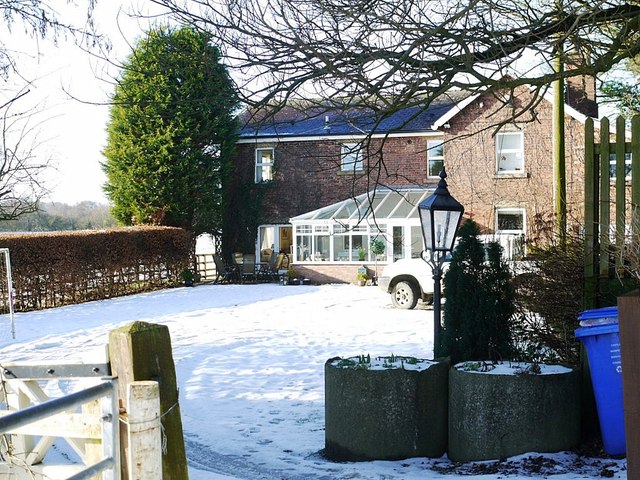In 1902, the Margaret Pit, situated at the foot of Station Road, and the last deep mine to be worked in the village, was bought by the Throckley Coal Co., and was worked until the early 1930's. After that it's reserves were accessed from the Isabella Pit at Throckley.
On 26th June 1902 an oak tree was planted for the coronation of Edward VII by Fenwick Charlton on the green at the top of Station Road . The 1901 Census showed he was born in 1851 (50 years old) and working as the Colliery Engineer at Heddon Margaret Pit.
The first power driven aircraft was flown by the Wright brothers on 17th December 1903. One of the casualties on our War Memorial would be killed in action serving in the Royal Flying Corps just a few years later.
In 1908, the Old Age Pension was introduced. In Heddon the Methodist Chapel was altered, creating a porch and schoolroom, and a forge was set up beside the Swan Inn, starting a small business that would run until 2011.
Only elementary education was given at the Church School in the village but Rev. William Pringle, Vicar of Heddon between 1905-32, ran a private school at the vicarage, offering a higher education to local children. He advertised in the Newcastle Journal on Thursday 16 April 1914.
The First World War was to start on 28 July 1914 and lasted until 11 November 1918. More than 9 million combatants were killed; a casualty rate exacerbated by the belligerents' technological and industrial sophistication, and tactical stalemate. It was the fifth-deadliest conflict in world history, paving the way for major political changes, including revolutions in many of the nations involved.
The start of the twentieth century was a time of rapid industrial and technological development in Britain and the government needed a specific idea of which industries were in growth or decline. So in the 1911 census people were asked for the first time to state which industry they worked in, in addition to their profession or trade. Many people misinterpreted this request and provided more information than they needed to, giving the name (and sometimes address) of their employer, as well as the industry.
The enumerator would later hand-write a numeric code next to each occupation entry on a household form to identify the nature of the occupation. There are nearly 1000 codes.
A similar system of roughly the same number of codes was also used to categorise birthplaces.
The biggest cause of people missing from the 1911 census was civil disobedience. As part of the protest against the government’s continued refusal to grant women the vote, the suffragettes organised a mass boycott of the census. Exact numbers will never be known, but it is estimated that thousands of women may be missing from the 1911 census. I have found no clear evidence that this was the case in Heddon.
In 1911 (as in 1901), No.1 Moore Court was home to the Jobey family. Thomas Benjamin Jobey (Colliery Overman, aged 63) and Barbara Ann Jobey (aged 63) had 10 children, 9 still alive. One of their sons, George Jobey (born Heddon, age 25), is recorded on the Census as a Clerk / Accountant. He played football for local boys' clubs in Morpeth before joining Newcastle United in 1906, who won the Championship in 1908-09. He later played for Arsenal, Bradford, and the Scottish club, Hamilton Academical during WW1, when the Football League was suspended. He eventually became a football manager, notably of Derby County (1925–1941). He died on 9 May 1962, aged 76.
Both terraces were built for employees of Heddon Brickworks by Bates of Heddon Hall in 1889. They were sold to Throckley Coal Company in 1895.
Cadwallader John Bates (1853-1902), antiquarian, inherited Heddon Hall, Colliery and Brickworks from his father, Thomas Bates. Cadwallader was named after a cousin, the 12th and last, Lord Blayney (1802-1874), an old Welsh (and later, Irish) family. Moore Court was named after the maiden name of Cadwallader’s great uncle, also Thomas Bates (1775-1849), a famous stockbreeder.
The Wrights were still operating the Post Office in Jubilee House. John Wright (13, born in Heddon), grandson of John Wright (67, Colliery Weighman), would be another casualty of the First World War. Next door, Joseph Jordan (30) was still baking, assisted in 1911 by his sister, Minnie (27).
The Wolland family were still living in Mushroom Row. Henry Wolland (37, born Swansea) and Isabella Wolland (38, born Berwick upon Tweed) had had 8 children, all born in Heddon, but the Census recorded that only 7 were still alive. An entry on the form for Henrietta (age 12) had been crossed out. The oldest son, Albert Wolland (18; apprentice fitter in Steel Works), would be killed in the War.
John Armatage (46) was now Manager of The Royal French Arms at Frenchman's Row. His brother, George Armatage (b.1852, Wylam) was working as a Blacksmith and Horseshoer and lived with his family in a property identified on the 1911 Census as Quarry House, Houghton. His son, George (23, Heddon) was also in the business. Another son, Robert Armatage (19, Heddon), a postman, would later be a casualty of the First World War.
The Rev. Richard Burdon (80) was at home in Heddon House, along with his cousin, Cecilia Briscoe (51, Ireland), four servants and a young visitor from Rothbury. Richard Burdon died at Heddon House in 1919 aged 89 years.









 RSS Feed
RSS Feed
